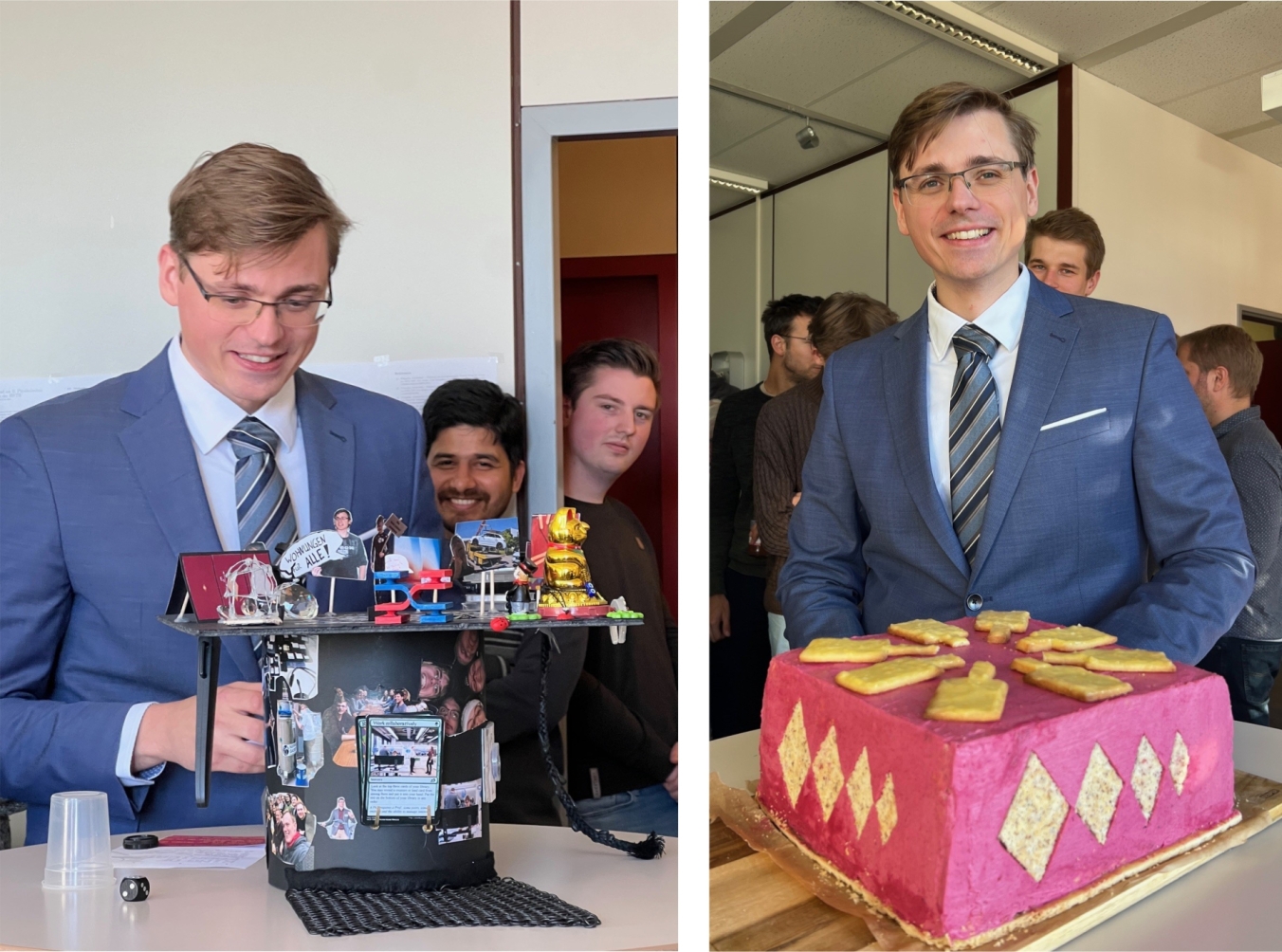Current events
Next talk tomorrow at 11:00 by Simone Sotgiu!
News 11.11.2025
New publication: Tailoring Phonon Polaritons in hBN with the Plasmonic Phase-Change Material In3SbTe2
Site Content:
04.02.2025
Congratulations to Jan-Lucas Uslu on his admission to the PhD program at Stanford!
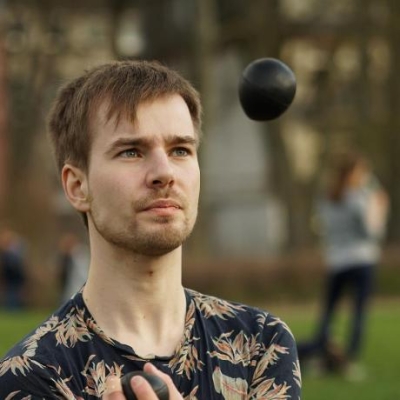
We warmly congratulate our former Bachelor’s and Master’s student, Jan-Lucas Uslu, on being admitted to the PhD program at the Department of Applied Physics at Stanford (California, USA). We a wish Jan-Lucas great success in his research and future endeavours!

21.12.2024
Season's Greetings from the 2D Materials and Quantum Devices Group
As the festive season approaches quickly, we at the 2D Materials and Quantum Devices Group would like to extend our warmest wishes to all for a Merry Christmas and a Happy New Year 2025!


16.12.2024
New publication: Benchmarking the integration of hexagonal boron nitride crystals and thin films into graphene-based van der Waals heterostructures
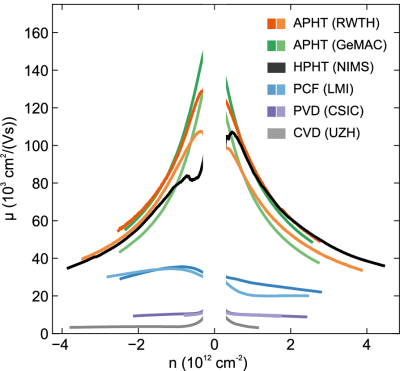
2D Materials 12, 015017 (2025) We present a benchmarking protocol that combines the characterization of boron nitride (BN) crystals and films with the evaluation of the electronic properties of graphene on these substrates. Our study includes hBN crystals grown under different conditions (atmospheric pressure high temperature, high pressure high temperature, pressure controlled furnace) and scalable BN films deposited by either chemical or physical vapor deposition (CVD or PVD). We explore the complete process from boron nitride growth, over its optical characterization by time-resolved cathodoluminescence (TRCL), to the optical and electronic characterization of graphene by Raman spectroscopy after encapsulation and Hall bar processing. Within our benchmarking protocol we achieve a homogeneous electronic performance within each Hall bar device through a fast and reproducible processing routine. We find that a free exciton lifetime of 1 ns measured on as-grown hBN crystals by TRCL is sufficient to achieve high graphene room temperature charge carrier mobilities of 80,000 cm2/(Vs) at a carrier density of |n| = 1012 cm-2, while respective exciton lifetimes around 100 ps yield mobilities up to 30,000 cm2/(Vs). For scalable PVD-grown BN films, we measure carrier mobilities exceeding 10,000 cm2/(Vs) which correlates with a graphene Raman 2D peak linewidth of 22 cm-1. Our work highlights the importance of the Raman 2D linewidth of graphene as a critical metric that effectively assesses the interface quality (i.e. surface roughness) to the BN substrate, which directly affects the charge carrier mobility of graphene. Graphene 2D linewidth analysis is suitable for all BN substrates and is particularly advantageous when TRCL or BN Raman spectroscopy cannot be applied to specific BN materials such as amorphous or thin films. This underlines the superior role of spatially-resolved spectroscopy in the evaluation of BN crystals and films for the use of high-mobility graphene devices.

23.11.2024
Inspiring insights into the world of attoseconds by Bernd Beschoten
Today, Bernd Beschoten from our group fascinated the audience with his "November-Vorlesung", i.e. talk on the world's shortest light pulses: femtoseconds and attoseconds. A truly inspiring journey through cutting-edge physics!
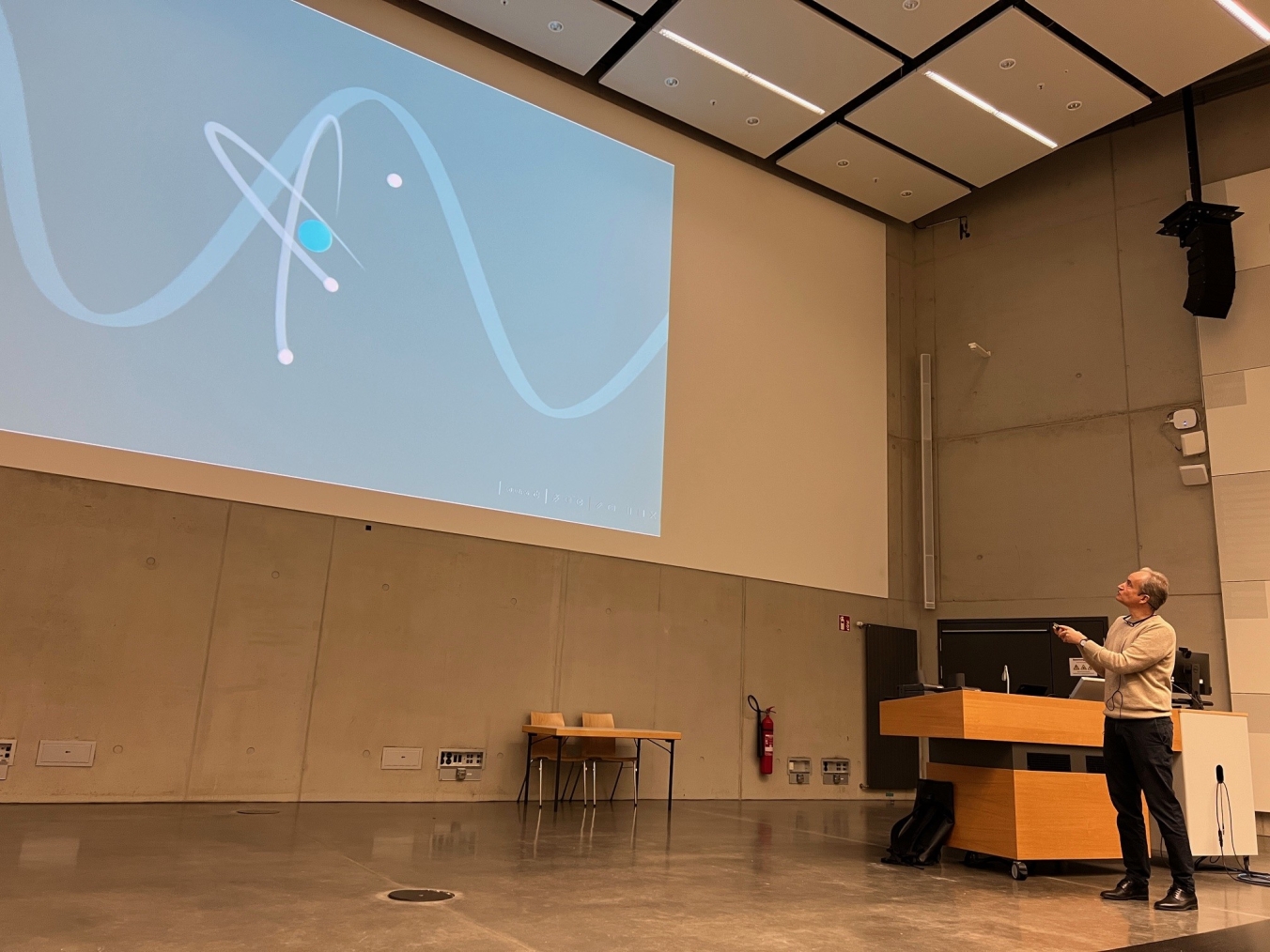

12.11.2024
New publication: Identifying Band Structure Changes of FePS3 across the Antiferromagnetic Phase Transition
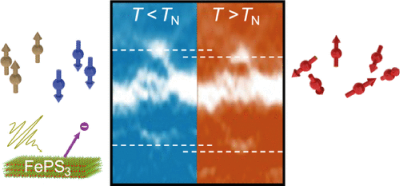
ACS Nano 18, 32924 (2024) Magnetic 2D materials enable interesting tuning options of magnetism. As an example, the van der Waals material FePS3, a zig-zag-type intralayer antiferromagnet, exhibits very strong magnetoelastic coupling due to the different bond lengths along different ferromagnetic and antiferromagnetic coupling directions enabling elastic tuning of magnetic properties. The likely cause of the length change is the intricate competition between direct exchange of the Fe atoms and superexchange via the S and P atoms. To elucidate this interplay, we study the band structure of exfoliated FePS3 by μm scale ARPES (angular resolved photoelectron spectroscopy), both, above and below the Néel temperature TN. We found three characteristic changes across TN. They involve S 3p-type bands, Fe 3d-type bands and P 3p-type bands, respectively, as attributed by comparison with density functional theory calculations (DFT + U). This highlights the involvement of all the atoms in the magnetic phase transition providing independent evidence for the intricate exchange paths.

11.11.2024
New publication: Electrically Controlled Excitons, Charge Transfer Induced Trions, and Narrowband Emitters in MoSe2−WSe2 Lateral Heterostructure
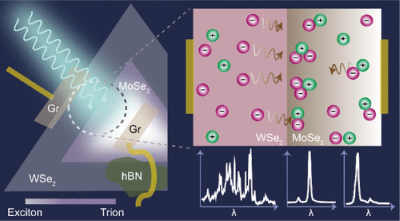
Nano Letters 24, 14615 (2024) Controlling excitons and their transport in two-dimensional (2D) transition metal dichalcogenide heterostructures is central to advancing photonics and electronics on-chip integration. We investigate the controlled generation and manipulation of excitons and their complexes in monolayer MoSe2−WSe2 lateral heterostructures (LHSs). Incorporating graphene as a back gate and edge contact in a field-effect transistor geometry, we achieve the precise electrical tuning of exciton complexes and their transfer across interfaces. Photoluminescence and photocurrent maps at 4 K reveal the synergistic effect of the local electric field and interface phenomena in the modulation of excitons, trions, and free carriers. We observe spatial variations in the exciton and trion densities driven by exciton−trion conversion under electrical manipulation. Additionally, we demonstrate controlled narrow-band emissions within the LHS through carrier injection and electrical biasing. Density functional theory calculation reveals significant band modification at the lateral interfaces. This work advances exciton manipulation in LHS and shows promise for next-generation 2D quantum devices.

08.11.2024
Another Successful Wissenschaftsnacht at RWTH Aachen University!
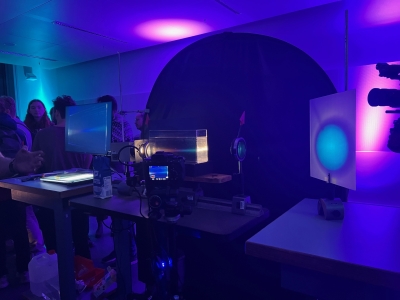
Once again, the Wissenschaftsnacht at RWTH Aachen proved to be a resounding success! This year, as in previous years, many members of our group contributed their time and expertise to make the evening a memorable experience for visitors.

04.11.2024
Eike Icking successfully defended his PhD thesis
On Monday 04.11.2024, Eike Icking successfully defended his PhD thesis. Congratulations to Dr. Eike Icking on this great accomplishment! Note the fantastic cake by Corinne Steiner.
